Agriculture and Livestock
63 childs folders
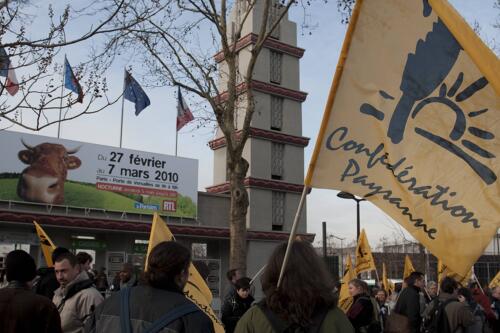
113 items
Agricultural centre
The 60th agricultural show opens on Saturday. Back to various trade fairs in the 2010s, farmers were already demonstrating in front of its doors to demand more justice...
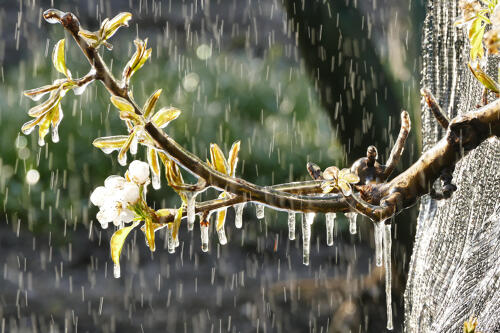
74 items
The threat of frost on our crops and nature
Periods of high temperatures in the middle of winter scare nature! The buds are forming and the slightest bit of late frost will be fatal to them. Farmers try to counter this phenomenon, either by warming the atmosphere by burning bales of straw, or by spraying the crops with water which, once in the form of ice on the buds, becomes a protective shell against the temperatures far below. from 0°C.
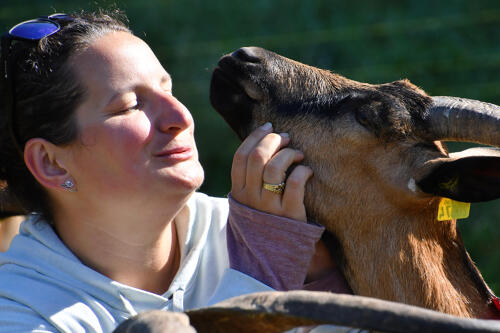
12 items
Professional retraining: becoming a breeder
After years spent in the radiology department of the University Hospital, Marie reluctantly leaves her job following the evolution of her department and which no longer suits her. During her career change she discovered a passion for goats and decided to create a goat farm and make cheese. Its current herd is made up of around thirty “Alpine chamois” goats and 2 goats. The beginnings are difficult and tiring but she is passionate about her job and her goats, whom she adores and who do her well.
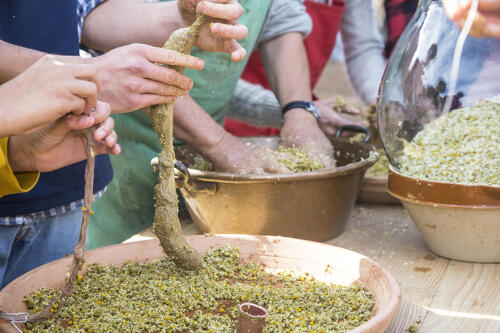
61 items
Biodynamie: préparation 503
Biodynamics is a cultivation method that does not use any synthetic product, it goes beyond organic farming based on lunar rhythms and esoteric principles. Preparation 503 is based on feverfew. As a medicinal plant, the target of chamomile is the intestine. Chamomile corresponds to the planet Mercury. The preparation of the preparation consists of filling the small intestines of cattle with chamomile flowers, like sausages, then burying them throughout the winter. Preparation 503 further channels the incorporation of the calcium process into the living.
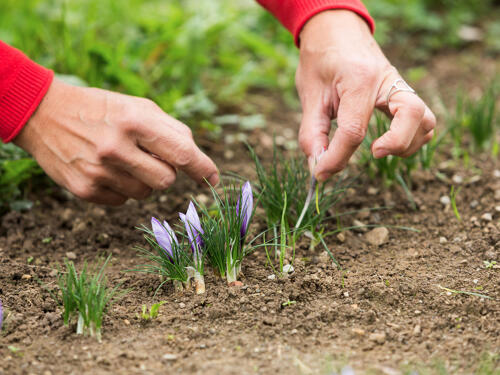
46 items
A year in the life of saffron
The bulbs planted in the spring, the harvest in mid-October, the saffron flower lives somewhat unlike other crops. It is in any case ready to be present on the holiday tables! Monitoring over a year in Haute-Savoie.

31 items
The Christmas tree, from its cultivation to your living room
Cultivation of spruces or Nordmann fir trees in the Morvan, or in Belgium... the Christmas tree travels and will be on time in your living room and in the popular squares of many French cities.
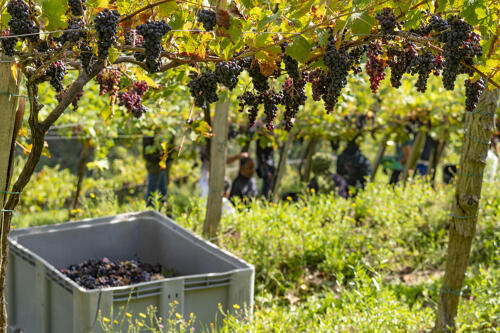
126 items
Harvest in the Spanish Basque country
In the Spanish Basque country, the Txakoli harvest is currently taking place. This wine is obtained with the varieties with the exotic names Hondarribi zuri and Hondarribi beltza. These vines have the particularity of being cultivated according to a system of trellises at a greater height above the ground, the continuous foliage forming a cover which makes it possible to improve the microclimate.
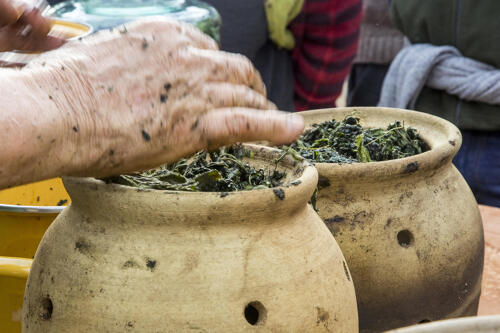
21 items
Biodynamics: preparation based on nettle
The nettle is coming! We know soups and donuts, but nettle is also used biodynamically. Buried for a whole year in a pot, it will be useful to plants by becoming the "504 preparation". It is an irreplaceable plant that allows plant growth to overcome the effects of soil iron.
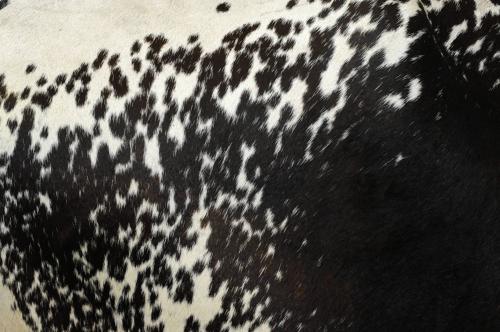
99 items
Cow colors
The cows that roam our French meadows are very different in appearance and color. Discovery of around forty breeds: the gray Bazadaise which looks beautiful at the Bazas festival, the cool baba with its long hairs, the Scottish, passing through Corsica which basks on the beaches of the island of Beauty ... The Galloway presents her beautiful black curls, the Rhaetian Gray brings out her clear ears on her browner coat and the Ferrandaise plays the one with the most mini spots!
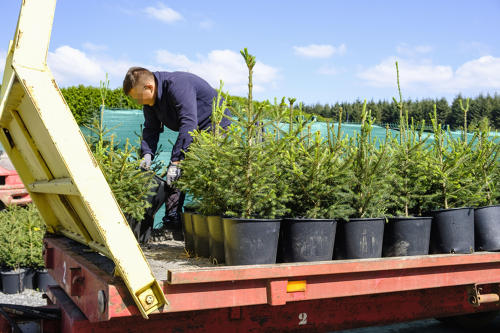
25 items
The migration of Christmas trees
In September, the Nordmann trees of the Green Cap company in Belgium, intended for the Christmas celebrations, left the greenhouses, loaded on trailers and transported by tractor where they were placed in the ground in their pot. The young trees will thus be able to grow in size to be the most beautiful during the holidays.
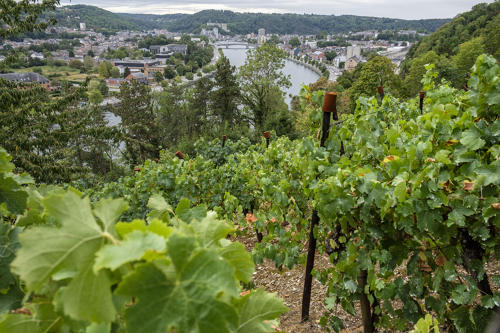
32 items
The vine is invading Belgium
Global warming has some good sides, there are more and more vines in Belgium. Our photographer Jean-Marc Quinet went to meet 33 professional or amateur winegrowers throughout Wallonia. Their journey resulted in a book "Balades, vin en Wallonie".
No need to deny it, Belgium is known for its fries, its beers and the so specific accent that makes it possible to recognize a Belgian speaker anywhere in the world.
Wine, a noble product if there is one, remains in the minds of people the prerogative of France, Spain, Italy, Australia, Chile, etc., but certainly no Belgium. However, in Wallonia (southern Belgium) there is a well-established wine-growing tradition which dates back to the Middle Ages but which had disappeared with the advent of industry. For about fifteen years, viticulture has been brought up to date in Belgium. Producers, a little crazy no doubt, have embarked on the adventure and made the bet of success. Well theirs ... today, still, sparkling white wines are the hottest days of international competitions. Gold medals are raining down on Walloon wines, pushing back their French competitors on the other steps of the podium. And, climate change should further support an ever-changing production.
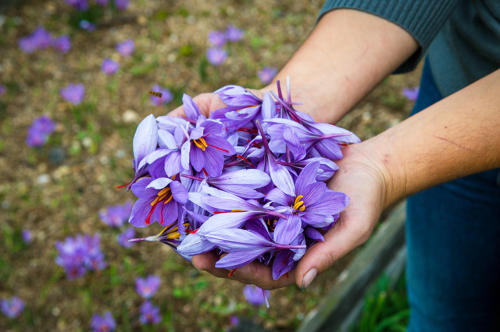
24 items
Safran : récolte à Pélussin
While the flowers appear everywhere despite the frost, there is one that is warm, its bulb remains confined until it blooms in the fall: it is the crocus! Valérie Mouton-Ferrier cultivates this magical crocus which gives saffron, in Pélussin in the Loire. Discover the delicate gestures of removing the pistil from the flower which makes this spice one of the most expensive in the world!
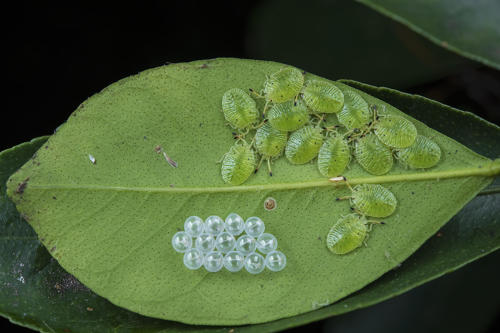
19 items
The scary bug with citrus fruits
It shines the bronze-orange bug and gives shade to citrus fruits! This species of bug is a pest in Australia that poses significant problems for the cultivation of lemon, orange and mandarin trees because it feeds on flowers and young fruits. "Fortunately" the heatwaves unfolding in Sydney force groups of adults, nymphs and young larvae to descend to the bottom of the trunks. This is the perfect time for gardeners who can collect them all at once to control the population without using insecticides.
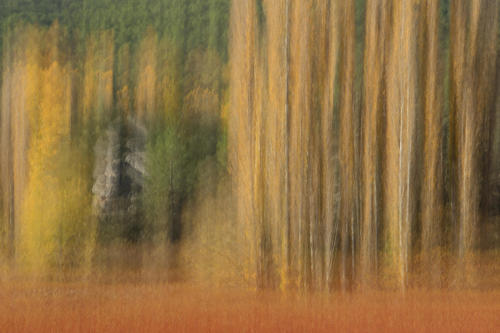
13 items
Couleur chaude à Cuenca
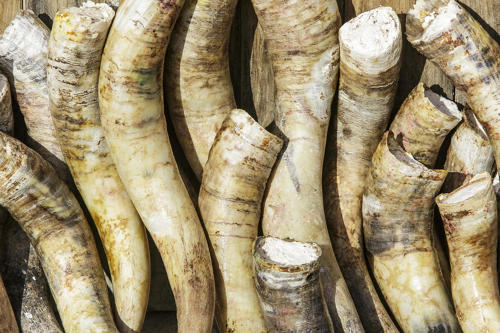
42 items
Biodynamie: préparation 501
The quartz pebbles collected from the slopes of the Alps must be absolutely pure, with large flat faces. Reduced to a texture resembling crystal sugar in a pestle, the coarse silica is then reduced to flour on an agate stone. The dough is then stored in horns which are buried throughout the summer. Unearthed in the fall, they are then exposed to light during the winter before use in the spring. Diffused on the leaves, preparation 501 improves photosynthesis.
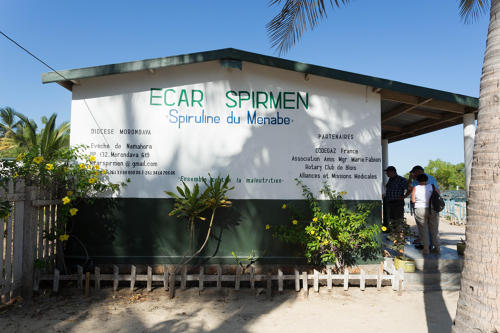
17 items
Spirulina to the aid of humanity
Spirulina is a filamentous cyanobacterium of blue green color in the form of a spiral, and which has many health benefits, it is found in the form of powder, flakes, tablets or even capsules. Classified in the family of “super foods”, spirulina is also considered by the World Health Organization (WHO) as the best food for humanity in the 21st century and the most complete because of its composition and its exceptional nutritional richness. In Madagascar, a laboratory specializes in its production.
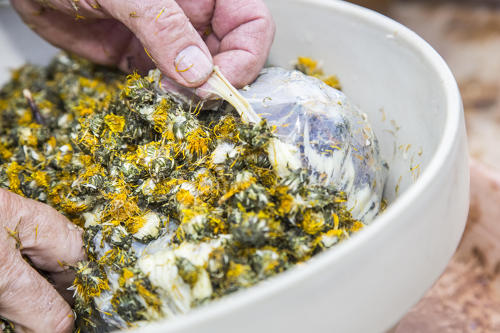
34 items
Preparation 506 based on dandelion
In the biodynamic family, I ask for 506. Dandelion flowers (Taraxacum officinale) are picked before they go to seed. Let them wilt slightly, or dry them, then place them in a cool place until the beginning of October. In autumn, the flowers are pressed strongly and loaded into the mesentery of a cow or an ox. The preparation is put in a stoneware pot and buried. The whole thing will pass the winter exposed to the powerful forces of the earth which, according to Steiner, trickle into the ground at this time of the year. In spring, the material obtained is soft and crumbly and ready to be used for compost. Take only a tiny amount, one teaspoon per ten tonnes of compost. It is the forces that matter, not the substances.
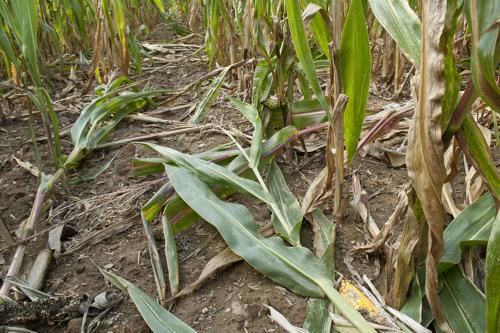
61 items
Hunting stopped
The concern settled among hunters regarding the cessation of hunting. What will be the consequences with wild boars, roe deer, deer, pigeons ... present in the fields?
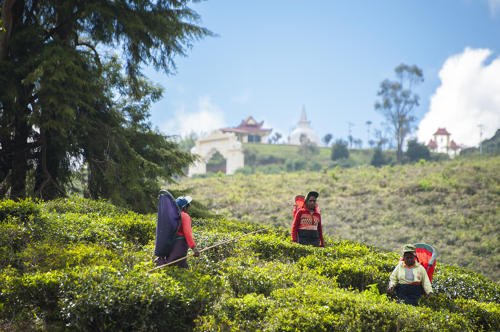
35 items
Sri Lanka tea
Tea plantations in the Nuwara Eliya region have given Ceylon tea its worldwide reputation. Mainly black tea which is obtained by fermentation. Manual picking using large hoods is a job for women in the plantations, which benefit from the excellent equatorial climate at an optimal altitude of 1800m. Certainly the standard of living of these workers is low but for all that there is a certain serenity in these plantations.
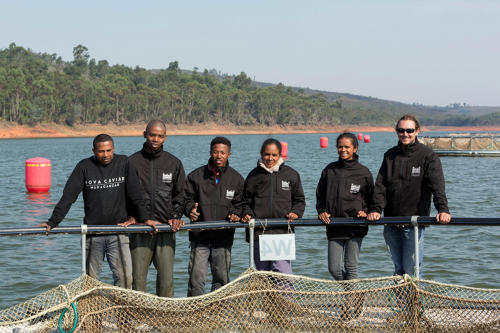
29 items
Madagascan caviar
Delphine and Christophe Dabezie and their partner Alexandre Guerrier founded Acipenser, a company responsible for managing Rova Caviar. Started in 2009 with sturgeon eggs imported from Russia, the company is located on Lake Mantasoa renowned for its pure waters about sixty kilometers from Antananarivo, The first production dates back to 2017 with 50 kilos, In 2018 production reached 500 Kilos to arrive in 2019 at 5 tonnes. Rova caviar exports to France, to the United States and to China. They produce food for their sturgeons themselves and also develop freshwater fish farming in order to repopulate Lake Mantasoa and thus help fishermen who have found themselves. deprived of a departure from the lake where it is of course forbidden to fish.The company only uses species of pure sturgeon like Beluga, Persicus, Berry and Nudiventris, Production should reach its cruising speed towards 2027.
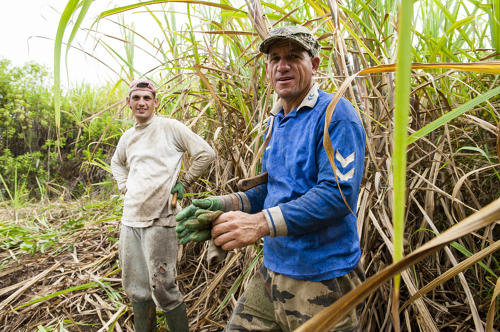
45 items
Sugar cane at La Réunion island
Legacy of colonization the sugar cane plantations have survived through the ages, better than tea and coffee, which have been almost abandoned. Times are changing but tensions persist in a hard-working community that still cuts cane with a machete. At the Tampon, photographer Stéphane Couteel met Dominique and his sons.
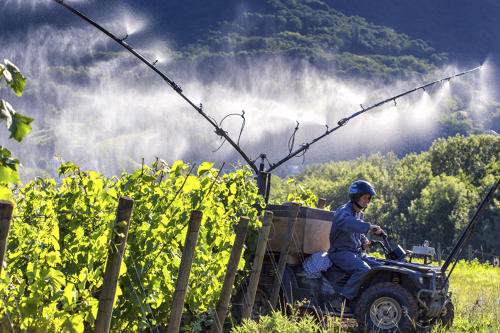
125 items
Viticulture in biodynamics
Winemakers have made the shift to biodynamics, about 400 practice it, two labels exist: Demeter and Biodyvin. Biodynamic agriculture revolves around lunar calendar cycles but also, and above all, according to the seasons and the weather. The winemaker will always prefer to enter his vineyard when the earth is dry enough not to degrade and not cause more damage than benefits. He will align himself at best on the cosmic rhythms but without ever endangering his team or his plants.
Horn dung or preparation 500, the basis of biodynamic activity is buried from the autumn equinox to the spring equinox. It will then be diluted in water and energized. The homeopathic preparation will be applied in the spring on warm ground and / or in autumn on still warm ground. It will be a powerful activator of soil microbial life, both surface and deep.
Complementary to this 500 which acts at the soil level, the horn silica will intervene on the aerial parts of the plants. It will stimulate the growth and resistance of leaves to a lot of diseases including cryptogams. Unlike the first preparation, it will be buried in summer, kept in the sun and sprayed in fine fog, early in the morning. The horn dung, it is spread in a big drop.
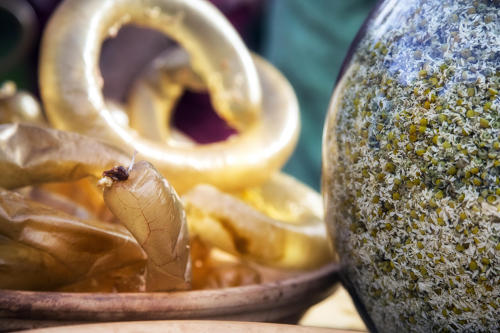
53 items
Biodynamics: soon 100 years
The foundations of biodynamic agriculture were laid by Rudolf Steiner in the 1920s with the aim of healing the sick land and improving the properties of agricultural products.
Biodynamic agriculture is a mode of production that links the agricultural sector, a living ecosystem, balanced and autonomous, with natural rhythms and local biodiversity. This method of organic farming uses herbal preparations or animal extracts to stimulate life or to organize it via the planetary forces.
The first visible advantage of biodynamic agriculture over any other practice is materialized at the soil level with a significantly higher organic matter content and gives it a good structure. The second advantage is found in the growth and development of the plant.
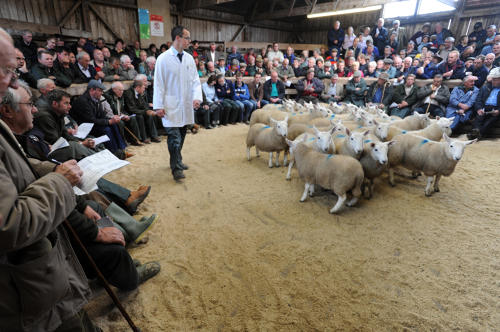
52 items
Lairg sheep market
According to a seemingly unchanging sequence, every year in mid-August (photos august 2019), in a building located on the A836 road in the heart of Sutherland (Scotland), the village of Lairg (891 inhabitants) hosts the largest market sheep from Europe. During a morning, during an auction, hundreds of sheep change hands ...
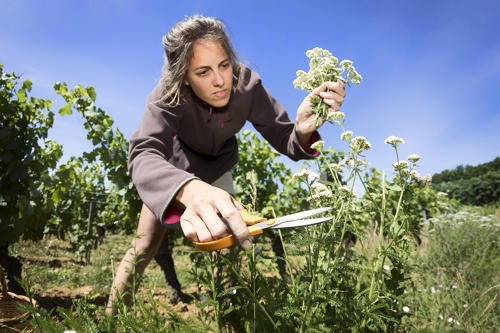
43 items
Achillée en biodynamie
The yarrow-based preparation 502 has a role in the soil, it makes it possible to mobilize elements such as sulfur and potash so that the plants can assimilate them. To prepare it, compress yarrow flowers in moistened male deer bladders. These are suspended all summer, in a place as sunny as possible before being buried during the whole winter.
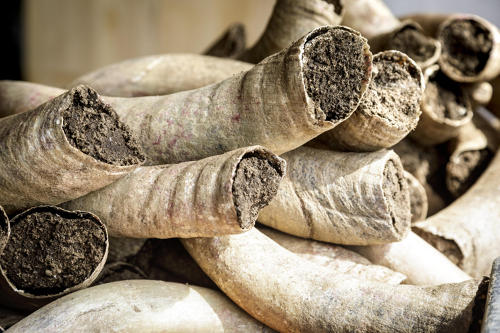
79 items
Biodynamie: préparation 500
Biodynamie was born in the 1920s, it is a branch of organic farming. It is based on the use of almost a dozen "preparations". Here is the preparation 500 called "horn dung" which is obtained by the fermentation in the soil during the winter period, of good cow dung which has been introduced into cow horns. In the spring, a black-brown soil appears, with a slight humic odor of undergrowth. The preparation should then be diluted in rainwater and vigorously stirred for exactly one hour before being sprayed on the plants.
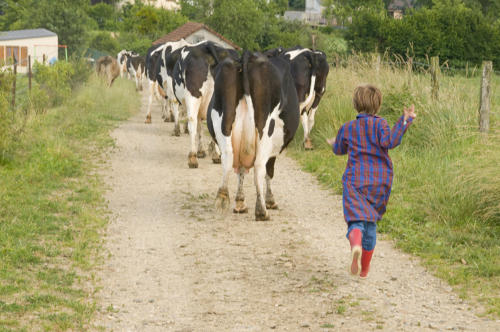
39 items
Manon in the farm
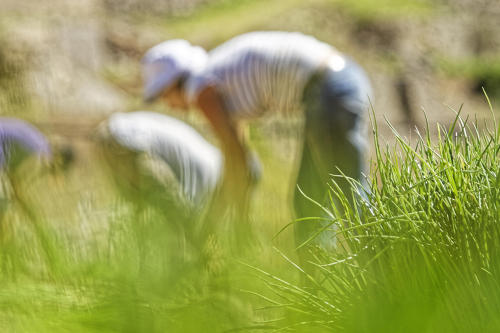
44 items
Taleyrac Onion
In the spring, the transplanting of sweet onions from Taleyrac transforms the Cevennes landscape into terraced cultivation similar to the Asian rice fields. This sweet onion seduced cévénols, languedociens and today all the french.
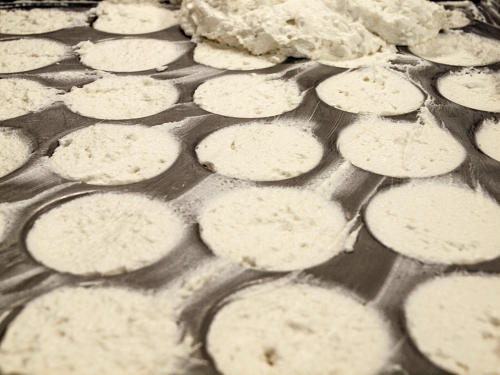
177 items
Ferme du Brukiza
Come and discover the farm of Brukiza, in the Basque Country, where Laurence and Mathieu, goat farmers in organic farming, work in pairs. All milk from their goats is processed on site at their cheese factory and sold largely by Laurence and Mathieu. We find a whole range of fresh and refined cheeses (dung, logs, faisselle, fromage frais).
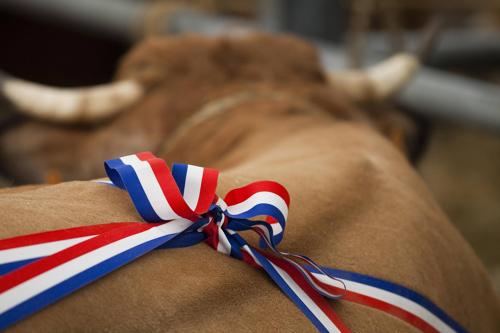
25 items
Easter Beef Fair
The Easter Beef Festival in Laguiole takes place every year in March, the third weekend before Easter. For two days, the Aubrac animals are exposed and sold. An event that values the meat sector, breeders, buyers and butchers and allows an exchange between consumer and producer.
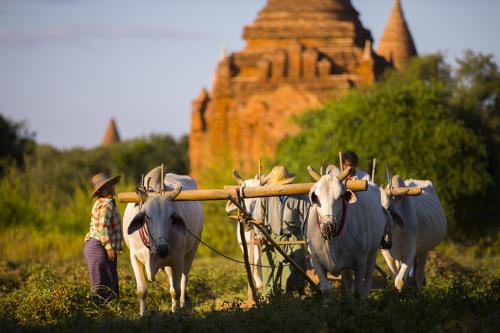
20 items
Culture de la cacahuète
Burma is one of the 10 largest peanut growing countries. It is also the 3rd most cultivated agricultural product in Burma. The Burmese use it a lot, both for the oil that is extracted and to integrate them whole in different dishes. Peanuts can be cooked but also sprinkled crushed on noodles, salads, infused in soups ... They are also often served at the end of the meal with a mixture of green tea leaves, peas, ginger and various other ingredients that make up the thok lephet. The growth of peanut farming to make oil is such that in 2009, more than 730,000 hectares of Burmese land were exclusively dedicated to it. Burmese are now importing palm oil from Malaysia or Indonesia and peanut cultivation may be in danger.
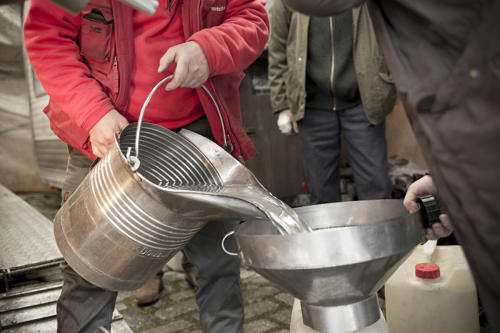
29 items
Vintage boilers in Isère
Gilles Gaudet is a traveling distiller. Every year, around January or February, it passes in the village of Revel in Isère. The inhabitants bring their fruits which are transformed into alcohol at 50 degrees, delicately perfumed.
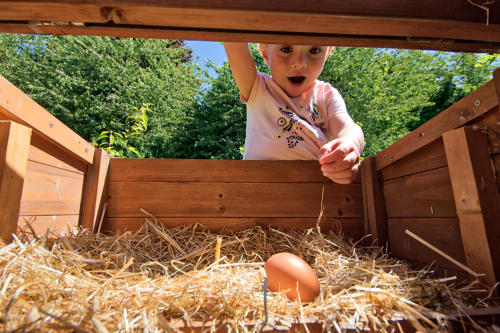
49 items
Elevage amateur de poules
The return to nature pushes more and more French towards the breeding of chickens. Henhouse with automatic or manual opening, cleaning of the latter ... the constraints are present and it is not impossible to find a dead hen in the morning killed by a predator. But what a pleasure to recover fresh eggs every day!
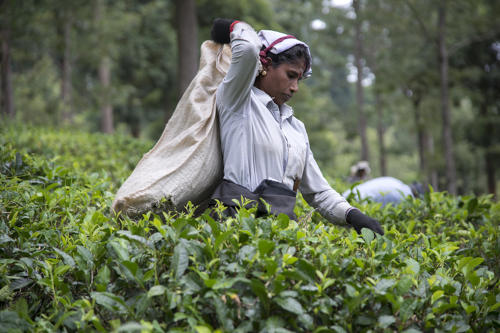
40 items
Tea, green gold from Sri Lanka
Sri Lanka is poised to become the world's third largest tea producer, ahead of Kenya. The first two remaining China and India. Last August, our photographer followed Tamil women who work more than 1,200 meters in the Haputale region harvesting tea that is classified as high-grown from high altitude. The harvest of tea leaves is done mainly by hand. The men are in charge of the maintenance of the plantations and a foreman takes care of the weighing. Women must harvest a minimum of 20 kg of leaves a day. A kilo is paid 40 Sri Lankan rupees, or about 20 cents. At the end of an exhausting day climbing up and down the plantations and carrying the bags, a picker earns 4.50 euros for the 20 kg harvested.

30 items
Anny lamas
At Anny, the Lamas welcome visitors. They discover everything we can do with their wool, the llamas have nothing to envy to the Montes! Anny Carde, spin to the wheel and finally the wool becomes sweater...

50 items
Vignoble du vin jaune
The yellow wine that is found in the Jura does not do anything like everyone else! beyond its golden color, it is the only one to be bottled in a clavelin, which is 62cl. His "Saint-Vincent" is called the Yellow Breakthrough that we do not hesitate locally to call "the gold of the Jura"!
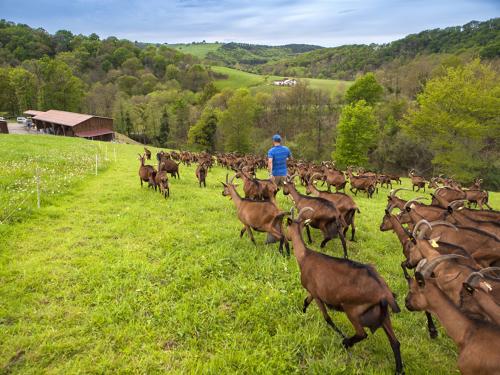
25 items
Retour à la campagne basque
Brother and sister, Mathieu and Laurence Bessouat chose to return to the family farm and become farmers by creating a goat farm and an organic cheese processing workshop. Goats have daily access to the wood of Brukiza and graze all day. Goats are cared for by homeopathy, aromatherapy and herbal medicine.
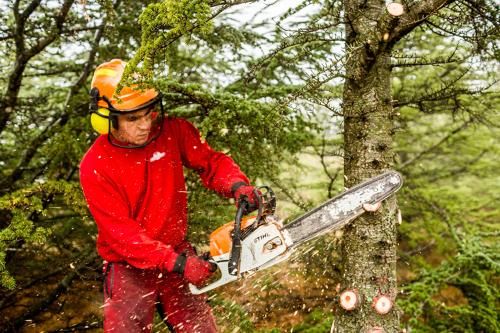
22 items
La forêt prête pour l'été
The branch DFCI (Defense of Forests Against Fires) of the National Office of Forests works all the year to maintain or to realize accesses to the different massifs, (as here in the Pyrénées-Orientales), by cutting, pruning or brushing the carriageways and their aisles.
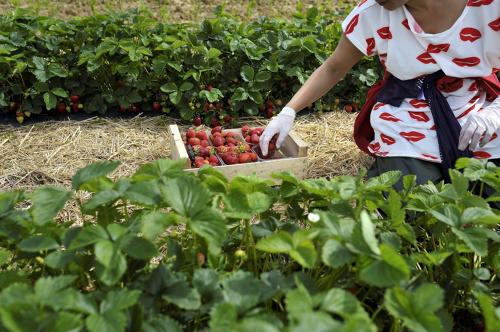
31 items
Des fraises d'île-de-France
60km from Paris, in the Vexin Park, 2 Ha of strawberries delight the gourmands. Since 1996, the Ravary family has been offering their strawberries since the end of May on the edge of departmental 14. The great-grandparents of maraicher already produced strawberries!
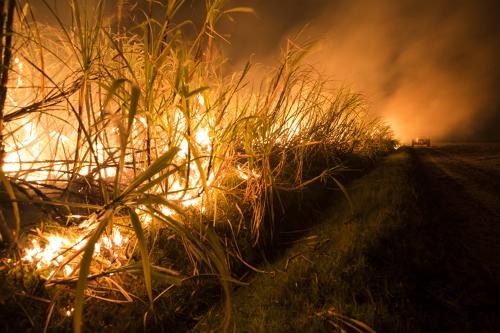
15 items
Drôle d'incendie
Fire in the south? no, this is a sugar cane burning technique in Australia to remove excess organic matter to facilitate harvesting.
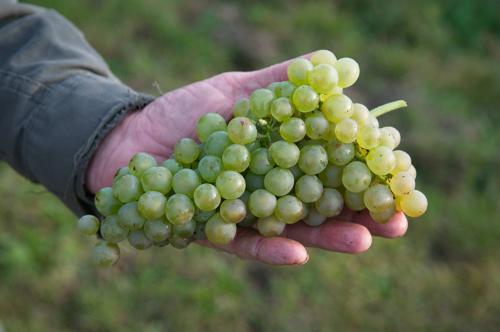
27 items
Début des vendanges des Côtes du Rhône
In Chavanay and Ampuis, the harvest of the Côte du Rhône will begin. Côte-Rôtie and Saint-Joseph take the elevator down the slopes.

20 items
Un moulin en activité dans le "93"
After a slow death, this mill has been rebuilt and turned its wings since 1988, almost thirty years. the house of the miller can be transported in this life of work.

20 items
Fair trade cocoa in Mexico
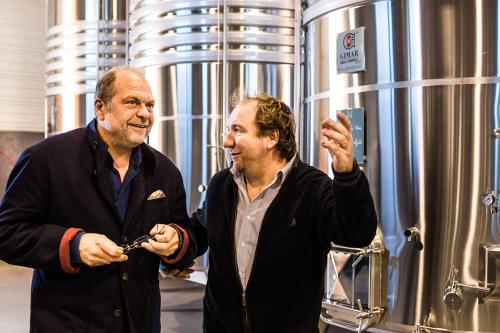
30 items
Haut de gamme de Collioure
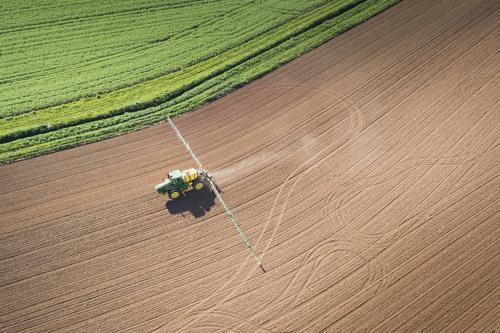
33 items
Vendée: terre nourricière
Vendée: Mother Earth
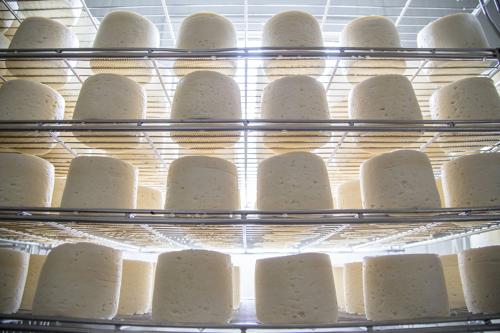
34 items
Du fromage de brebis
Live sheep's cheese
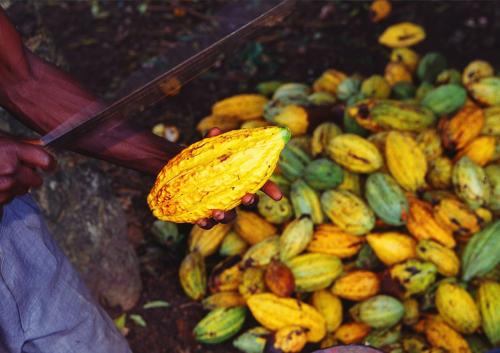
27 items
Cocoa
Pod with beans, trail cocoa in West Africa.
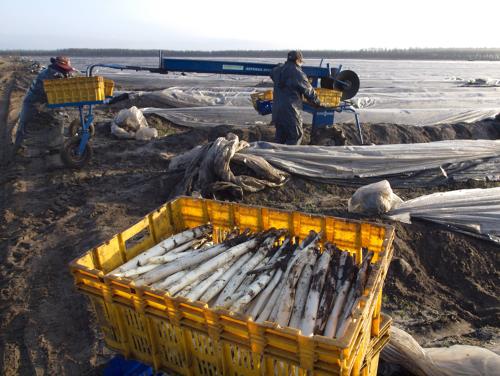
27 items
Tis the season for asparagus
Follow in the moors, the culture of asparagus, planting of the "claws" at harvest.
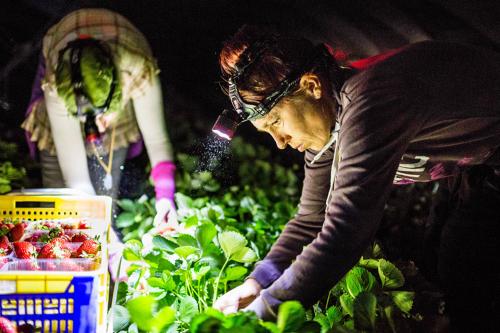
27 items
The Spanish strawberry is already in our plates
La province de Huelva, en Espagne est devenue en l’espace de 30 ans, LE producteur de fraise de l’Europe. Elles se récoltent de janvier à juin par 100 000 saisonniers, majoritairement des femmes, provenant de Roumanie, Pologne ou Maroc. Proche du parc naturel de la Doñana, cette culture est notamment critiquée pour sa consommation d’eau puisée dans des nappes phréatiques quasiment à sec.
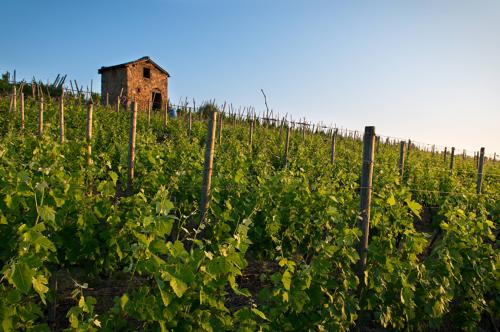
25 items
To the small care of the spring Côte-du-Rhône
Le printemps réveille les coteaux qui se reflètent dans le majestueux Rhône. les viticulteurs se mettent aux petits soins des vignes d'appellation Côte-Rotie et Condrieu en liant les branches naissantes.
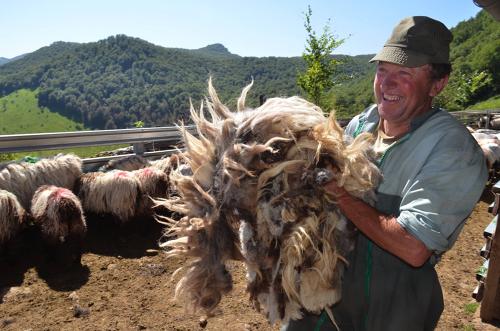
37 items
The Manech of the Pyrenees
Originaire du pays basque, les moutons manech à tête noire produisent le lait du fromage AOC d'Ossau-iraty.
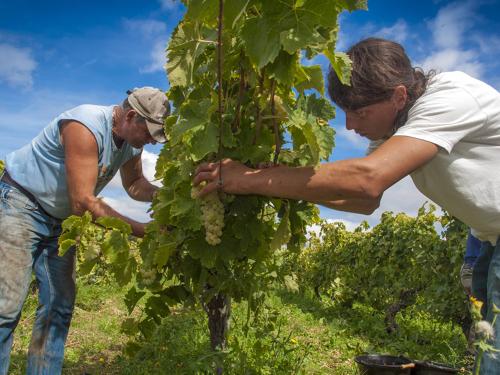
19 items
A little cognac bio?
Dans les vignobles des "Fins Bois" dans les Charentes, Mr Ramnoux fabrique du Cognac et du Pineau certifiés AB. Il pratique des vendanges manuelles et une agriculture en bio-dynamie.
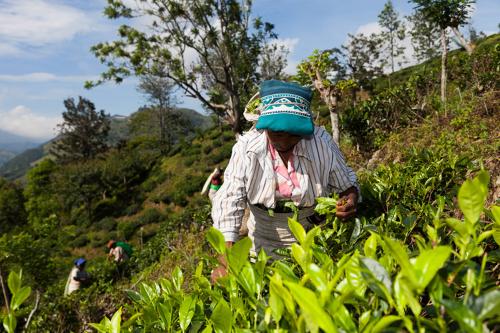
27 items
Sri-lanka thea
De la feuille à la tasse, le thé passe dans de nombreuses mains avant d'arriver dans notre sachet matinal.
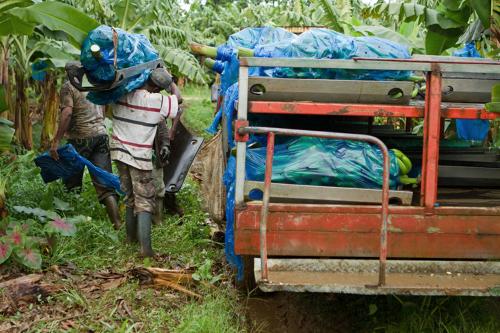
26 items
Culture of traditional banana Guadeloupe
Our bananas are still, mostly, treated. Pesticide spill in small helicopters ..
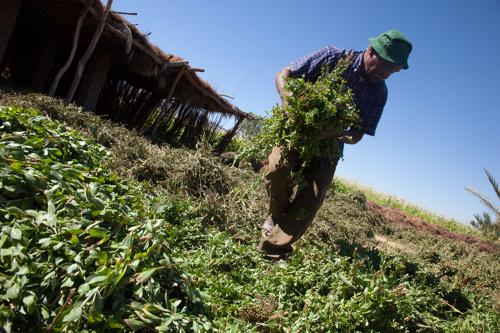
27 items
Organic Henna is grown in Morocco
In Morocco, farmers began to grow organic henna for export abroad and for the benefit of their community. They use organic seeds and fertilizers and a drip system. Unlike other cultures, it is the women who harvest. Aside from the hair coloring and decorations on the skin, it is used to cleanse and beautify the skin.
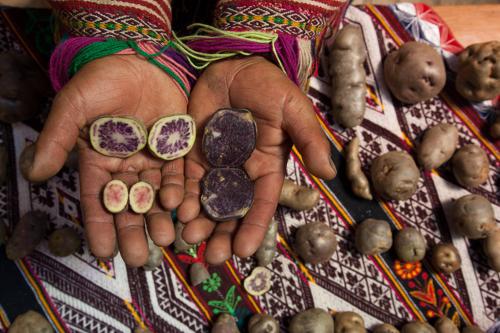
35 items
We must save the soldier Potato
The Andean region is the world center of domestication of the potato. Scientists at the International Potato and indigenous Quechua are racing against the clock to preserve the genetic diversity of native potatoes in the region so they do not disappear as suddenly as the Inca Empire.
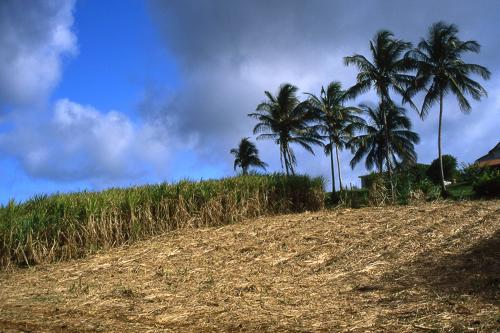
32 items
The rum road
Follow the steps in production of rum, cane alcohol.
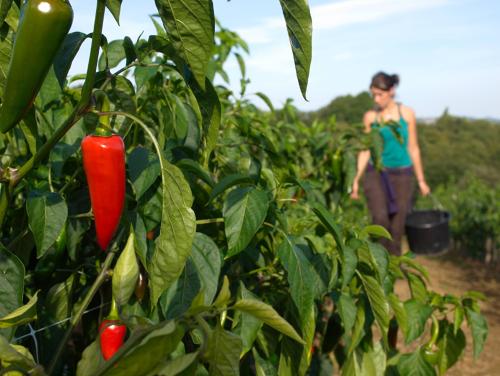
26 items
Espelette pepper: red gold of the Basque Country
In the Basque Country, it's not just the cap, there is also the Espelette! Holder of an AOC, red gold grows in a greenhouse before being transplanted into the ground. Harvesting is done on a staggered basis from August to frost. Powdered, it will delight Bayonne ham!
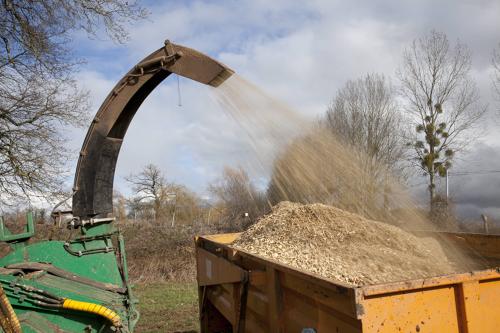
9 items
Hurdles: a solution for campaigns
Hedges back in our country! They protect from runoff, provide shelter and food resources for small animals (birds, small mammals) and have a pretty landscape! Their cut is used to provide wood chips for boilers. Farmers replant hedges in collaboration with the Chamber of Agriculture, such as the Bray.
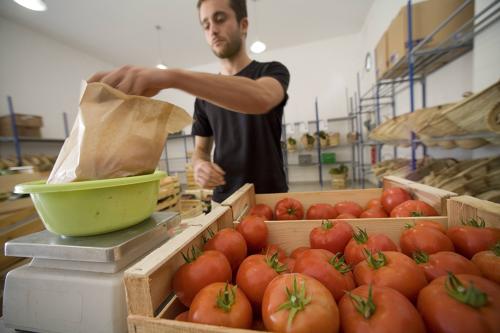
27 items
AMAP new consumption Popular
New agriculture, new consumers: AMAP (Association for the Maintenance of farming) can have fresh vegetables close to home and mostly organic. Members of the AMAP receive a weekly basket with seasonal vegetables.
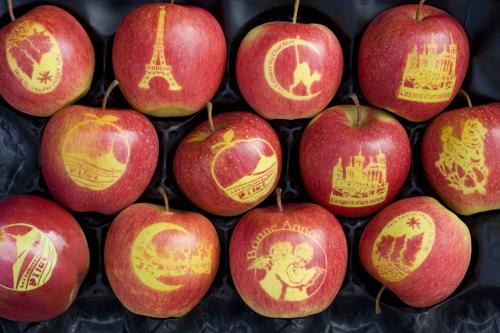
27 items
Original apple!
Apples marked it out of the ordinary! a simple stencil sticker during the ripening of fruit here and carry the message. Find Chavanay producers in the Loire and exploitation.
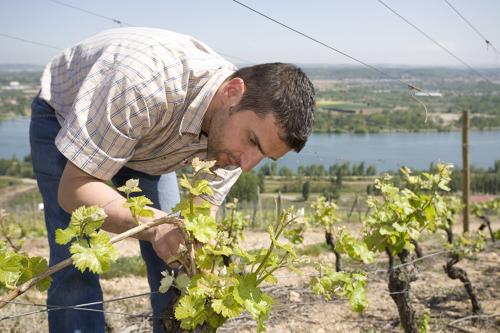
28 items
The life of a winegrower of Côte du Rhône
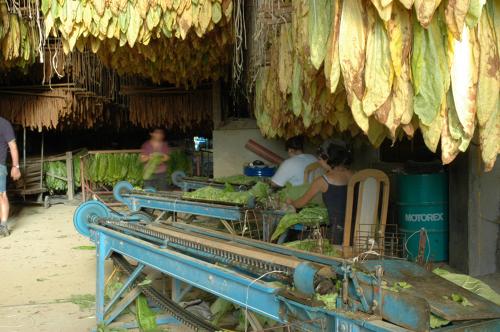
24 items
